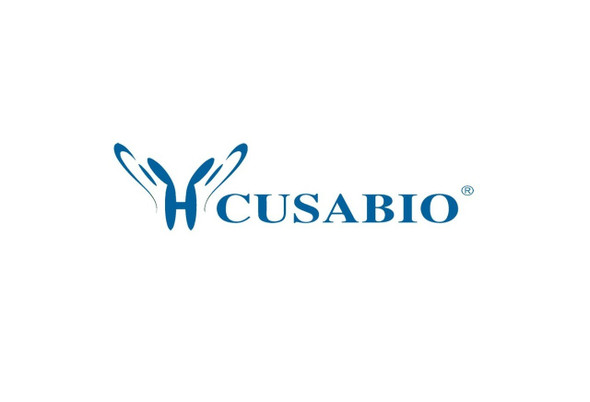Cusabio Human Recombinants
Recombinant Human Dynein light chain 1, Cytoplasmic domain (DYNLL1) | CSB-RP012844h
- SKU:
- CSB-RP012844h
- Availability:
- 3 - 7 Working Days
Description
Recombinant Human Dynein light chain 1, Cytoplasmic domain (DYNLL1) | CSB-RP012844h | Cusabio
Alternative Name(s): 8KDA dynein light chain ;DLC8Dynein light chain LC8-type 1;Protein inhibitor of neuronal nitric oxide synthase ;PIN
Gene Names: DYNLL1
Research Areas: Apoptosis
Organism: Homo sapiens (Human)
AA Sequence: MCDRKAVIKNADMSEEMQQDSVECATQALEKYNIEKDIAAHIKKEFDKKYNPTWHCIVGRNFGSYVTHETKHFIYFYLGQVAILLFKSG
Source: E.coli
Tag Info: N-terminal GST-tagged
Expression Region: 1-89aa
Sequence Info: Full Length
MW: 37.4 kDa
Purity: Greater than 90% as determined by SDS-PAGE.
Relevance: Acts as one of several non-catalytic accessory components of the Cytoplasmic domain dynein 1 complex that are thought to be involved in linking dynein to cargos and to adapter proteins that regulate dynein function. Cytoplasmic domain dynein 1 acts as a motor for the intracellular retrograde motility of vesicles and organelles along microtubules. May play a role in changing or maintaining the spatial distribution of cytoskeletal structures.Binds and inhibits the catalytic activity of neuronal nitric oxide synthase.Promotes transactivation functions of ESR1 and plays a role in the nuclear localization of ESR1.Regulates apoptotic activities of BCL2L11 by sequestering it to microtubules. Upon apoptotic stimuli the BCL2L11-DYNLL1 complex dissociates from Cytoplasmic domain dynein and translocates to mitochondria and sequesters BCL2 thus neutralizing its antiapoptotic activity.
Reference: Biochemical and structural characterization of the Pak1-LC8 interaction.Lightcap C.M., Sun S., Lear J.D., Rodeck U., Polenova T., Williams J.C.J. Biol. Chem. 283:27314-27324(2008)
Storage: The shelf life is related to many factors, storage state, buffer ingredients, storage temperature and the stability of the protein itself. Generally, the shelf life of liquid form is 6 months at -20?/-80?. The shelf life of lyophilized form is 12 months at -20?/-80?.
Notes: Repeated freezing and thawing is not recommended. Store working aliquots at 4? for up to one week.
Function: Acts as one of several non-catalytic accessory components of the cytoplasmic dynein 1 complex that are thought to be involved in linking dynein to cargos and to adapter proteins that regulate dynein function. Cytoplasmic dynein 1 acts as a motor for the intracellular retrograde motility of vesicles and organelles along microtubules. May play a role in changing or maintaining the spatial distribution of cytoskeletal structures.; FUNCTION
Involvement in disease:
Subcellular Location: Cytoplasm, cytoskeleton, Nucleus, Mitochondrion
Protein Families: Dynein light chain family
Tissue Specificity: Ubiquitous.
Paythway:
Form: Liquid or Lyophilized powder
Buffer: If the delivery form is liquid, the default storage buffer is Tris/PBS-based buffer, 5%-50% glycerol. If the delivery form is lyophilized powder, the buffer before lyophilization is Tris/PBS-based buffer, 6% Trehalose, pH 8.0.
Reconstitution: We recommend that this vial be briefly centrifuged prior to opening to bring the contents to the bottom. Please reconstitute protein in deionized sterile water to a concentration of 0.1-1.0 mg/mL.We recommend to add 5-50% of glycerol (final concentration) and aliquot for long-term storage at -20?/-80?. Our default final concentration of glycerol is 50%. Customers could use it as reference.
Uniprot ID: P63167
HGNC Database Link: HGNC
UniGene Database Link: UniGene
KEGG Database Link: KEGG
STRING Database Link: STRING
OMIM Database Link: OMIM










